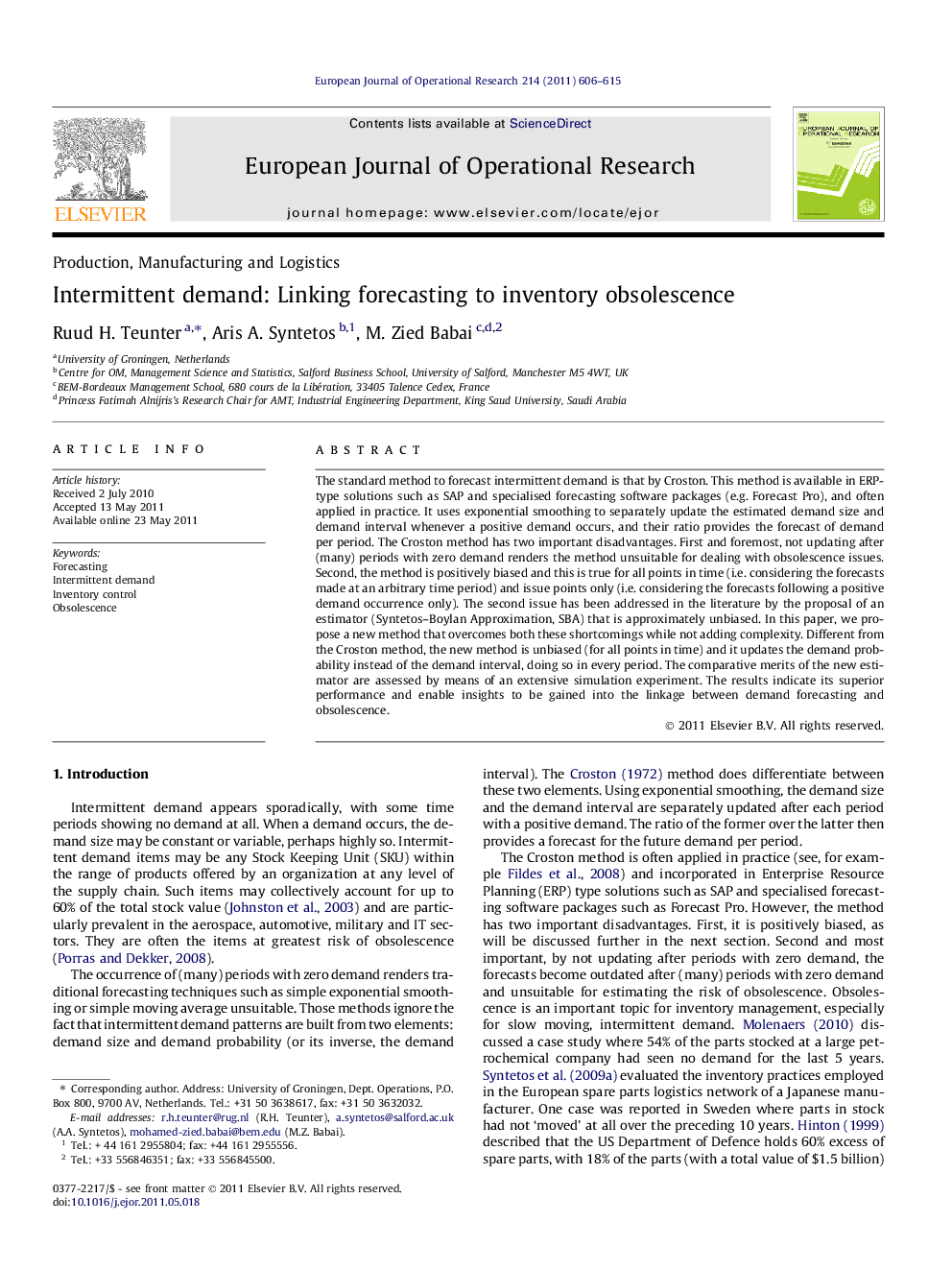| Article ID | Journal | Published Year | Pages | File Type |
|---|---|---|---|---|
| 476928 | European Journal of Operational Research | 2011 | 10 Pages |
The standard method to forecast intermittent demand is that by Croston. This method is available in ERP-type solutions such as SAP and specialised forecasting software packages (e.g. Forecast Pro), and often applied in practice. It uses exponential smoothing to separately update the estimated demand size and demand interval whenever a positive demand occurs, and their ratio provides the forecast of demand per period. The Croston method has two important disadvantages. First and foremost, not updating after (many) periods with zero demand renders the method unsuitable for dealing with obsolescence issues. Second, the method is positively biased and this is true for all points in time (i.e. considering the forecasts made at an arbitrary time period) and issue points only (i.e. considering the forecasts following a positive demand occurrence only). The second issue has been addressed in the literature by the proposal of an estimator (Syntetos–Boylan Approximation, SBA) that is approximately unbiased. In this paper, we propose a new method that overcomes both these shortcomings while not adding complexity. Different from the Croston method, the new method is unbiased (for all points in time) and it updates the demand probability instead of the demand interval, doing so in every period. The comparative merits of the new estimator are assessed by means of an extensive simulation experiment. The results indicate its superior performance and enable insights to be gained into the linkage between demand forecasting and obsolescence.
► A new method is proposed for forecasting intermittent demand. ► Different from the Croston method, the forecast is adjusted downward after a zero demand. ► As a result, the new method is more suitable for dealing with obsolescence issues. ► The new method is also statistically unbiased (for all points in time). ► The comparative merits of the new estimator are assessed by means of an extensive simulation experiment.
